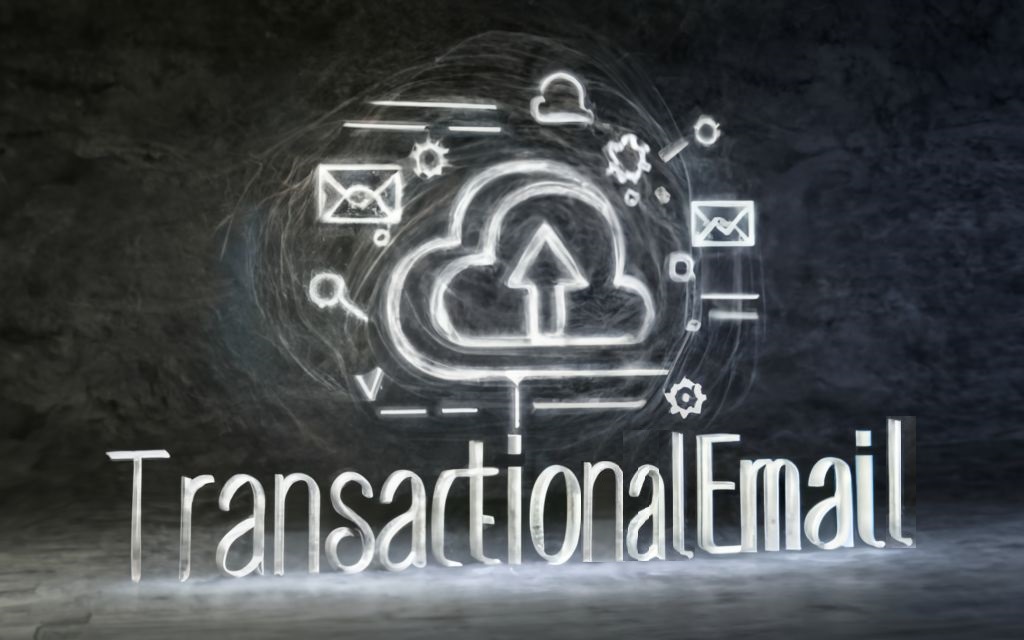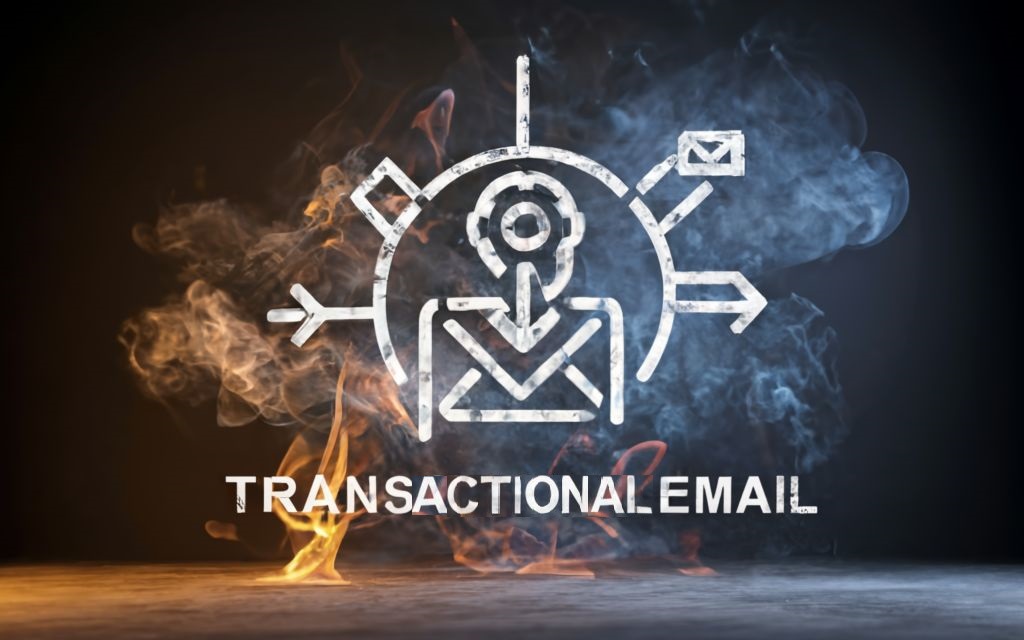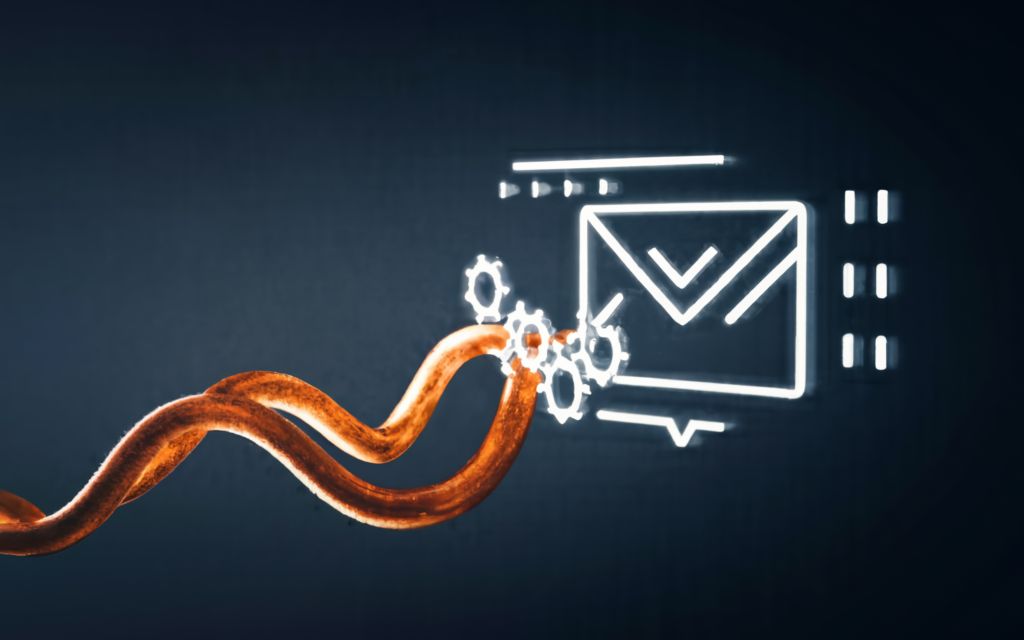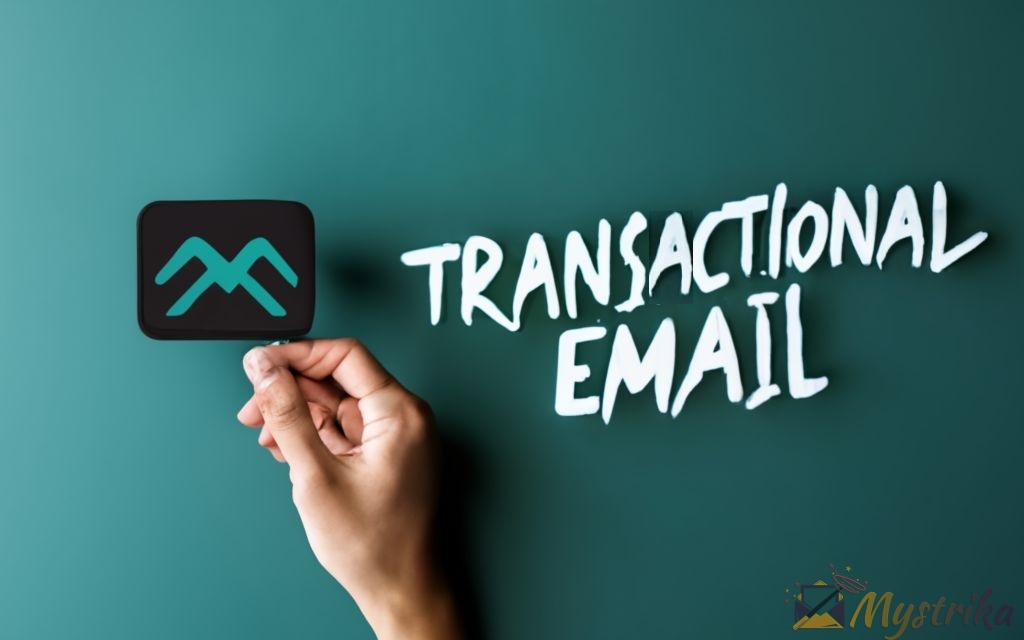Transactional emails may seem like boring automated necessities. But properly leveraged, these workhorse messages become revenue rockstars that surpass conventional email marketing. This comprehensive guide explores the untapped potential within transactional emails to take your customer communications to the next level. We’ll illuminate what transactional emails are, why they’re invaluable, strategies and examples from leading brands, technical execution, and advanced tactics to maximize the value of every automated email you send. If you want to reimagine transactional messaging as an engine for sales, engagement, and loyalty–read on!
What are Transactional Emails and Why are They Important?
Transactional emails are automated messages sent by businesses in response to specific actions taken by customers. Unlike promotional emails that are sent en masse as part of marketing campaigns, transactional emails are triggered by events related to individual subscribers.
Defining Transactional Emails
Transactional emails get their name because they communicate details regarding a transaction between the business and customer. Common triggers include:
- Account creation
- Purchase confirmation
- Shipping updates
- Password resets
- Subscription renewals
The key distinction is that transactional emails provide information directly related to an action the recipient has taken. They aren’t trying to sell something unprompted or generate brand awareness.
Some common types of transactional emails include:
- Welcome emails
- Receipts
- Order confirmations
- Password reset emails
- Account cancellation confirmations
Transactional emails are time-sensitive, usually requiring delivery immediately or within a short time frame after the triggering event. They convey critical information customers expect to receive, like order details and tracking numbers.
High Open and Conversion Rates
Unlike promotional emails, transactional emails enjoy much higher open and conversion rates. Industry data shows:
- Transactional emails have over 90% higher open rates compared to traditional email marketing messages.
- They also achieve 3-4 times higher click-through rates.
- Recipients are 9x more likely to open transactional vs. promotional emails.
This dramatic difference is because transactional emails are anticipated, relevant, and deliver real value to subscribers.
Someone expecting a receipt after making an online purchase is highly likely to open that email. But a random promo email could easily be ignored.
The high open rates lead to higher conversion rates and ROI. Transactional emails present ideal opportunities to guide customers to take further actions through strategic CTAs, cross-sells, etc.
Strengthening Customer Relationships
Transactional emails aren’t just about providing basic order details and tracking info.
They represent touchpoints to improve the customer experience and build loyalty.
Without quality transactional messaging, customers may feel disconnected from businesses they’ve patronized. Setting proper expectations through great transactional emails creates a sense of trust and satisfaction.
Things like providing multiple contact methods and links to self-help resources can really pay off. Going above and beyond on transactional emails demonstrates you care.
In summary, transactional emails are crucial automated messages that:
- Provide details on individual transactions and events
- Enjoy extremely high open and conversion rates
- Help strengthen customer relationships when done right
Taking full advantage of the unique benefits of transactional emails vs standard email marketing is key for success.

Types of Transactional Emails and Examples
There are several common categories of transactional emails businesses send to customers and subscribers. Let’s explore some of the most popular types along with real-world examples.
Account Creation and Verification
The first transactional emails customers receive are usually related to setting up and confirming new accounts.
Double Opt-In Emails
To comply with anti-spam laws and build trust, many companies use double opt-in for subscriptions. This is when customers receive a confirmation email to verify their signup after entering their email address.
Below is a great example from Macy’s. It includes:
- A personalized subject line
- Clear instructions on what to do next
- A coupon code incentive to complete the process
- Branding like colors and logos
!Macy’s Double Opt-In Email
Welcome and Confirmation Emails
Once the email address is verified, a welcome email confirms to customers their signup was successful.
This example from Headspace provides:
- A friendly confirmation message
- Details about what the user now has access to
- Links for next steps like visiting the website
- Branding elements
!Headspace Welcome Email
Welcome emails get relationships started on the right foot.
Purchase and Order Confirmation
Order confirmation and shipping emails keep customers informed of purchase details and delivery status.
Order Confirmation Emails
Order confirmations like this example from Walmart include:
- Order number
- Items purchased
- Prices
- Payment confirmation
- Shipping and billing addresses
- Links to track shipping status
!Walmart Order Confirmation Email
Providing this info promptly gives customers peace of mind.
Shipping Confirmation Emails
Once items ship, confirmation emails like this one from Express notify recipients:
- Expected delivery date
- Tracking number and link
- Order summary
- Links to contact support if needed
!Express Shipping Confirmation Email
Shipping updates get customers excited to receive their purchases.
Post-Purchase and Account Management
Transactional emails are also triggered by post-order events like password resets, renewals, and account changes.
Password Reset Emails
When users forget their passwords, they’ll need an email like this Spotify example to regain access.
Key elements include:
- Clear subject line
- Brief copy explaining next steps
- Obvious CTA link to reset the password
- Direct link to contact support if something’s wrong
- Branding
!Spotify Password Reset Email
Password reset emails are necessary for security. But they also provide branding touchpoints.
Subscription Renewal Reminders
For subscription businesses, reminders about upcoming renewals are transactional necessities.
This example from Netflix lets the user know:
- Billing date
- Renewal charge
- How to change their plan or cancel
!Netflix Subscription Renewal Reminder
Renewal reminders allow customers to manage subscriptions actively.
Account Cancellation Confirmations
When customers cancel accounts, confirmation emails like this Planoly example share:
- Specific date the account will close
- What customers should do next regarding data, billing, etc.
- Options to reactive the account
!Planoly Account Cancellation
Cancellation emails close the loop providing details subscribers need.
Customer Service and Support
Transactional emails also facilitate customer service through cart abandonment, surveys, and other tools.
Shopping Cart Abandonment Emails
When customers don’t complete online purchases, cart abandonment emails encourage them to return.
For example, Society6 uses:
- Discount code
- Visual reminder of products left in the cart
- Recommendations for other items the customer might like
!Society6 Cart Abandonment Email
Abandoned cart emails nudge customers along the buying journey.
Customer Satisfaction Surveys
Transactional feedback emails like this Warby Parker example give customers a voice:
- Personalized subject and introduction
- Simple star rating scales
- Opportunity to elaborate on experience
- Chance to win a gift card
!Warby Parker Feedback Survey
Surveys collect insights directly from customers to fuel improvements.
In summary, diverse types of transactional emails address critical touchpoints throughout the entire customer lifecycle.

Best Practices for Transactional Email Success
While all transactional emails share common purposes, some work better than others. Follow these best practices when creating and sending transactional emails to maximize their impact.
Personalization and Branding
Transactional emails may be automatically generated, but that doesn’t mean they can’t connect with recipients. Leverage personalization to make them feel more human.
Use Customer Names
Addressing customers directly with their first name makes transactional emails feel like personal correspondence rather than canned automated messages.
Subject: Thanks for your order, John!
Email copy: Hi John, we’re getting your order ready to ship!
Reference Specific Details
Mention individual order numbers, items purchased, chosen shipping address, and other specifics to the transaction.
Avoid vague statements like “Thanks for your order” when you can say “Thanks for ordering a blue mountain bike on 1/23.”
Align with Brand Identity
Just like other business emails, transactional messages should reflect your brand. Use logos, fonts, colors, tone of voice, etc. to maintain brand consistency.
Segment with Dynamic Content
Customize emails using merge tags based on variables like:
- First name
- Order details
- Location
- Purchase history
Dynamic content takes personalization up a notch.
Timely Delivery and Urgency
The whole purpose of transactional emails is to inform customers about time-sensitive happenings. Make sure your delivery and content reflect that.
Send Immediately
Transactional emails lose value if they aren’t delivered quickly. For example, order confirmations should go out within minutes or hours, not days later.
Optimize your system and email service provider to send transactional emails ASAP.
Create Urgency with Subject Lines
Subject lines are critical for getting opened. Reflect the timeliness in urgent phrasing like:
- Your order has shipped!
- Password reset requested
- Act now: expiration notice
Limit Content
Transactional emails aren’t necessarily the place for lengthy copy. Get to the point fast so customers get the gist at a glance.
Use concise phrasing: Your subscription will expire in 3 days on 1/31.
Structure Content Logically
Break down key details in easy-to-scan sections:
Order Number: #ABC123
Shipping To: 123 Main St.
Arriving: Tuesday 1/28
Use Countdown Timers
When there’s a pressing deadline, include timers to prompt customers to take action.
Your 30% off coupon expires in: 00:03:22:11
Clear Details and Actionable Next Steps
At their core, transactional emails provide critical information. Present it clearly and guide readers toward next actions.
Lead with Relevant Details
Don’t bury the lede. Put the most pertinent info like order numbers, tracking links, amounts charged, etc. front and center.
Give Context Up Front
Begin emails with brief explanatory copy like “Here are your order details” or “Your password reset request.”
Use Headings and Lists
Break up sections under labeled headings and present information in scannable bullet points.
Link to Helpful Resources
Provide links to self-service portals, knowledge bases, support pages, and other resources.
Include Actionable CTAs
Close with clear calls-to-action: Track delivery, See your tickets, Reset password now.
List Different Contact Methods
Give contact info for things like chat, phone, email, social media support.
Useful Links and Contact Information
Transactional emails provide assistance beyond the initial notifications. Include ample links and contact details.
Link to Account
Allow customers to access their accounts with a linked login button.
Share Social Media Profiles
Increase followers by linking Instagram, Twitter, Facebook pages.
Provide Multiple Contact Options
Reference Self-Help Resources
List phone numbers, live chat, emails, contact forms to get help.
Link to FAQs, help centers, support forums, etc.
Cite Return Policies
Detail how to exchange or return items with policy links.
List Downgrade/Cancellation Steps
Explain how to change plans or cancel accounts if needed.

Sending Transactional Emails with Mail Processing Software
While you can try sending transactional emails directly through email clients or basic SMTP servers, utilizing dedicated transactional email services offers major advantages. Let’s explore finding the right provider and optimizing deliverability.
Finding the Right Transactional Email Service Provider
When evaluating transactional email services, look for these key features:
Easy API Integration
Transactional emails are triggered by events, so you’ll need to connect your apps and databases to the email platform via API.
Flexibility and Scalability
Your email volumes will fluctuate, so the platform should smoothly handle both modest and heavy use cases.
High Deliverability Rates
Choose services with great sender reputations so your urgent emails reliably reach the inbox.
Inbox Testing and Preview
Test how your transactional emails will render across different email clients.
Comprehensive Analytics
Track opens, clicks, bounces, spam complaints, unsubscribes, and more to optimize emails.
Experiment with different transactional email content to determine what works best.
Automation Workflows
Set up sequences like cart abandonment drips to send automated follow-up emails.
Dynamic Transactional Templates
Personalize transactional emails with customized elements for each recipient.
Free Tier or Trial
Test transactional email services out before committing to understand capabilities.
Integrating Transactional Emails into Your Tech Stack
Once decided on a provider, proper integration ensures seamless transactional email delivery.
1. Choose Your Sending Method
Connect via SMTP, API, or both depending on your setup. SMTP is simpler but less flexible.
2. Build Automated Triggers
Program your apps to initiate a transactional send when specified events occur.
3. Create Dynamic Templates
Set up templates to pull in customized data for each subscriber.
4. Verify Sending Domains
Prove domain ownership via DNS records to maximize deliverability.
5. Implement Error Handling
Build retry logic to resend emails if initial attempts fail.
6. Track Opens and Clicks
Append tracking pixels to measure engagement. But don’t track in violation of privacy laws.
7. Set Up Webhooks
Create webhooks to take action when emails are sent and opened, like triggering workflows.
Transactional Email Deliverability
Because transactional emails are so critical, optimizing deliverability is a must.
Warm Up New Sending Domains
Don’t start blasting transactions from a new domain. Gradually ramp up volumes.
Verify Sender Identities
Use methods like SPF, DKIM, and DMARC to authenticate your domain.
Check if your IP addresses have been blacklisted and request removal.
Enable Inbox Placement Tools
Use things like Sender Score and Litmus to identify issues getting to the inbox.
Review Spam Folder Reports
Inspect spammed emails to diagnose problems and improve deliverability.
Analyze Bounces
Categorize bounces by hard vs. soft, mailbox full, inactive user, etc. to pinpoint why emails fail.
Limit Complaints
Avoid common triggers like oversending, misleading content, unfamiliar senders.
Check Authentication and Security
Using TLS and proper authentication prevents emails from being flagged as risky.
Choosing the right transactional email service and optimizing your setup is crucial for reliably reaching inboxes and fulfilling the purpose of your transactional communications.
Making the Most of Every Transactional Email Opportunity
Transactional emails provide tremendous potential to engage customers beyond purely informational content. With strategic enhancements, you can turn transactional emails into revenue drivers.
Drive Conversions with Strategic CTAs
Calls-to-action turn recipients into take action after checking out key transaction details.
** spiders at the lay wrethered the troll not the far **
Promote Next Logical Steps
Guide customers down conversion funnels:
- Track shipment
- Download purchases
- Access your tickets
- Reset password
Incentivize Quick Action
Encourage immediate responses with:
- Countdown timers
- Exclusive promo codes
- Limited-time discounts
Make CTAs Clear and Concise
Use strong action verbs that precisely define the offer:
✅ Get 20% off today only
❌ Learn more about our latest specials!
Place CTAs Strategically
Put them front and center instead of buried in paragraphs.
Use Supporting Visual Cues
Underline CTAs, use contrasting colors, add button icons.
Limit to One or Two CTAs
Transactional emails enjoy exceptionally high open rates, making them perfect for pitching complementary products.
Avoid overwhelming customers with too many calls-to-action.
Upsell and Cross-Sell in Transactional Emails
Suggest Relevant Upgrades
If a customer purchases basic software, offer the pro version.
Recommend Add-Ons and Accessories
Remind Them What Else You Offer
Buying a camera? Promote lenses, tripods, cases.
Cross-sell products from other parts of your catalog.
Use Dynamic Logic
Customize suggestions based on past purchases, interests, etc.
Make It Easy to Buy
Hyperlink product titles to purchase pages.
Limit Promotional Content
Don’t distract from primary transactional content.
Collecting Feedback and Reviews
Transactional emails present ideal moments to solicit customer opinions and generate reviews.
Send Quick Surveys After Purchases
Gather feedback while the experience is still fresh.
Offer Review Incentives
Encourage leaving reviews by giving discounts on future orders.
Be Selective About Who You Ask
Only request reviews from satisfied long-time customers.
Time it Right
Don’t ask literally the second after someone purchases—wait a few days.
Keep it Short
Get key insights with 2-3 questions instead of long surveys.
Make Leaving Reviews Simple
Provide direct links to your profiles on review sites.
Sharing Valuable Content and Loyalty Offers
Transactional touchpoints are chances to demonstrate value beyond the core service.
Link to Helpful Blog Posts and Guides
Publish tailored content then promote it in transactional emails.
Spotlight User-Generated Content
Showcase photos and videos created by customers using your product.
Promote Loyalty Programs
Remind customers to use points, credits, tier benefits, etc.
Offer Exclusive Savings
Provide special coupon codes or sales redeemable by transaction email recipients.
Give Sneak Peeks at New Products
Generate buzz for an upcoming launch.
Wish Them a Happy Birthday or Anniversary
Add a personal touch by integrating date-based events.
With creativity, nearly any transactional email can become an engagement and revenue opportunity while still fulfilling its primary purpose. Think beyond purely informational messages and put these strategies to work!

Key Takeaways
- Transactional emails are automated messages sent in response to specific user actions like purchases, account creation, password resets, etc.
- Unlike standard email marketing, transactional emails enjoy much higher open and conversion rates because they provide timely and relevant information customers want.
- Common categories of transactional emails include confirmation messages, order updates, post-purchase communications, and customer service facilitation.
- Best practices for transactional email success include personalization, urgency, clear details, useful links, and contact information to provide the best experience.
- Real-world examples provide great inspiration for building effective transactional emails aligned with your brand across all stages of the customer journey.
- Dedicated transactional email services allow you to easily integrate and deliver these automated messages while optimizing for deliverability.
- Treat transactional emails as opportunities to connect with customers by driving conversions, upselling, collecting feedback, and sharing valuable content beyond purely informational purposes.
- With the right understanding, tools, and strategy, transactional emails become powerful channels for revenue and relationships far surpassing conventional email marketing results. Frequently Asked Questions What are some examples of transactional emails?
Common transactional emails include confirmation messages for account creation or online purchases, shipping and delivery notifications, password reset emails, subscription expiration reminders, account cancellation confirmations, and cart abandonment emails.
Frequently Asked Questions
What is the difference between transactional emails and marketing emails?
Transactional emails are automated messages sent in response to specific user actions. Marketing emails are outbound messages sent to groups of subscribers. Transactional emails are timely and user-initiated while marketing emails are proactive outreach.
Why are transactional emails important?
Transactional emails have very high open and conversion rates compared to other email types because recipients want or need the information they provide. They strengthen customer relationships by facilitating smooth experiences.
When should you send transactional emails?
Transactional emails should be sent immediately or as soon as possible in response to triggering user actions. Their value stems from providing prompt, real-time communications when users need them.
How do you create effective transactional emails?
Great transactional emails are personalized, on-brand, urgent, clear, and provide useful links and contact details. Study examples from leading companies to get design and content ideas for your own transactional emails.
What is the best transactional email service?
Leading options include SendGrid, Mailgun, Postmark, Amazon SES, and Mailjet. Evaluate free trials to find the right mix of ease of use, deliverability, analytics, and scalability for your needs.
How do you improve transactional email deliverability?
Warm up new sending domains gradually, use sender authentication tools, monitor blacklists, review spam reports, minimize complaints, and leverage placement solutions.
How can you generate more revenue from transactional emails?
Treat them as opportunities to include strategic CTAs, cross-sell recommendations, customer feedback requests, content sharing, and special offers or incentives.

